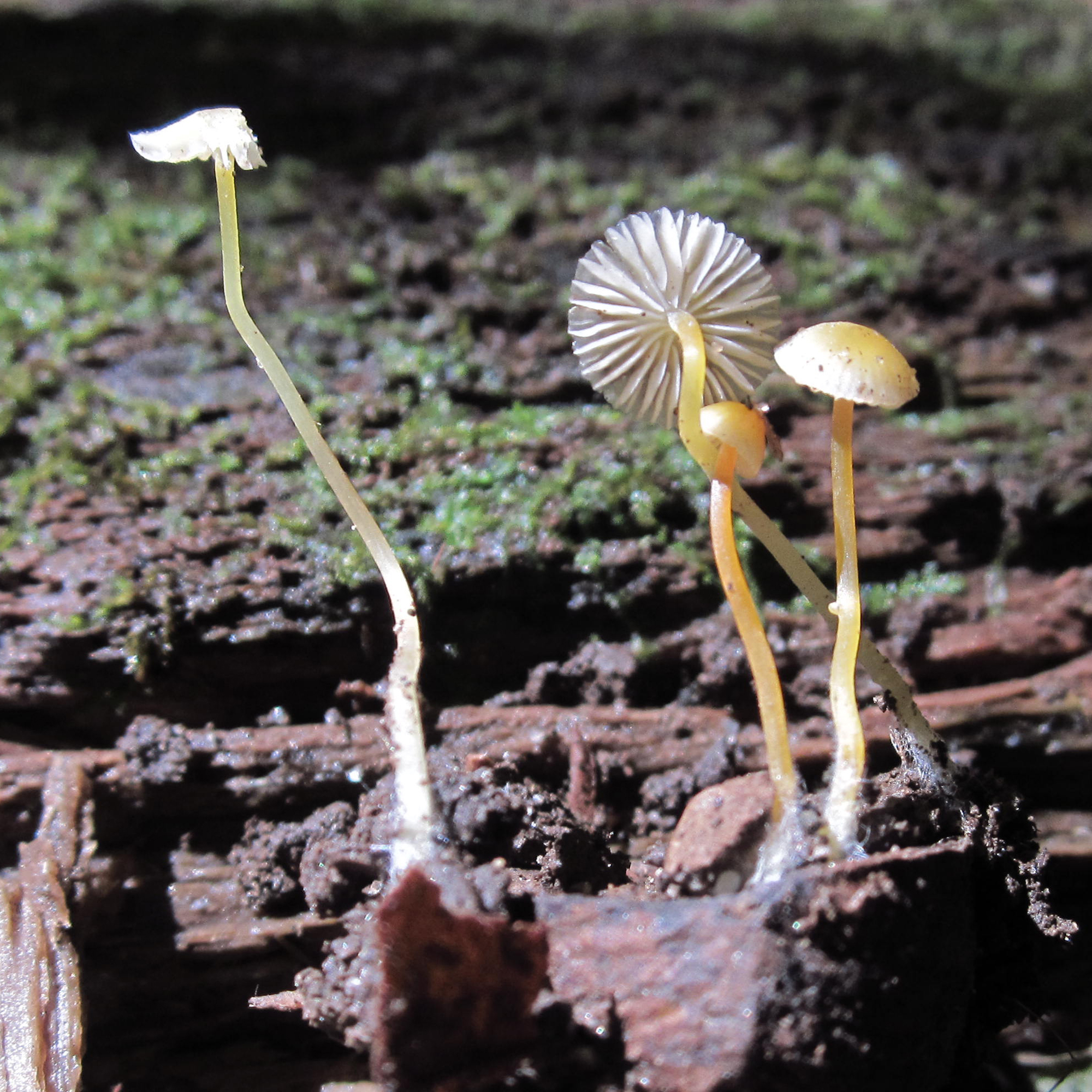Map Snapshot





45 Records
Relationships
Grows on decaying Black Walnut and hickory shells.
Seasonality Snapshot
Source: Wikipedia
| Mycena crocea | |
|---|---|

| |
| Scientific classification | |
| Kingdom: | |
| Division: | |
| Class: | |
| Order: | |
| Family: | |
| Genus: | |
| Species: | M. crocea
|
| Binomial name | |
| Mycena crocea Maas Geesteranus (1991)
| |
| Synonyms | |
|
Marasmius nucicola McDougall (1925) | |
| Mycena crocea | |
|---|---|
| Gills on hymenium | |
| Cap is conical or convex | |
| Hymenium is adnate | |
| Stipe is bare | |
| Spore print is white | |
| Ecology is saprotrophic | |
| Edibility is unknown | |
Mycena crocea, commonly known as the walnut mycena, is a species of mushroom in the family Mycenaceae. The small mushroom has a bright yellow, conical to broadly convex cap up to 15 mm (0.6 in) in diameter. The stem is tough and thin, up to 20 mm (0.8 in) tall, bright yellow at the top becoming progressively orange towards the base. The gills are adnate, subdistant, and yellowish, becoming lighter in age; and the spore print is white. This mushroom is saprobic and found exclusively on hickory nuts and walnuts in eastern North America. The specific epithet crocea refers to the orange color. The mushroom is commonly known as the "walnut mycena" and was previously and commonly misidentified as Mycena luteopallens.[1]
Description
[edit]The cap is vivid yellow, conical to broadly convex cap and up to 15 mm (0.6 in) in diameter. When young the cap tends to be conical or bell-shaped becoming plane or flat at maturity. The margin is striated. The surface is moist, glabrous, and somewhat hygrophanous. The flesh is thin, pallid, and yellowish. Odor and taste are not distinctive. The gills have an adnate attachment and are a pale yellowish color. They are subdistantly spaced. The sturdy stem is 10 to 20 mm (0.4 to 0.8 in) long by 1 to 1.5 mm (0.04 to 0.06 in) thick. The stipe is central, equal (i.e., roughly equal in thickness at the top and bottom), and dark orange to yellowish.[1]
The species is regarded as nonpoisonous, but is not necessarily edible.[2]
Microscopic characteristics
[edit]The spores are 7–9 x 4–5 μm, smooth, and elliptical, and weakly amyloid to inamyloid. Pleurocystidia and cheilocystidia are present[1]
Similar species
[edit]Mycena strobilinoides is similar to M. crocea, but is found in needle beds under conifers. Atheniella adonis has a fragile stem and a more reddish-pink coloration.[citation needed]
Habitat and distribution
[edit]Mycena crocea are found exclusively on hickory nuts and walnuts in eastern North America. It was first described as Marasmius nucicola in 1925 but that name could not be used in Mycena.[citation needed]
References
[edit]- ^ a b c Maas Geesteranus RA. (1991). "Studies in Mycenas. Additions and corrections, Part 1". Proc. Kon. Ned. Akad. V. Wetensch. 94: 377–403.
- ^ Miller Jr., Orson K.; Miller, Hope H. (2006). North American Mushrooms: A Field Guide to Edible and Inedible Fungi. Guilford, CN: FalconGuide. p. 134. ISBN 978-0-7627-3109-1.











